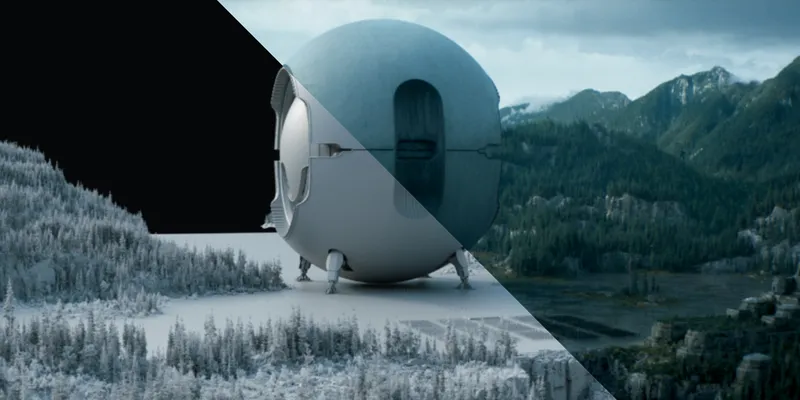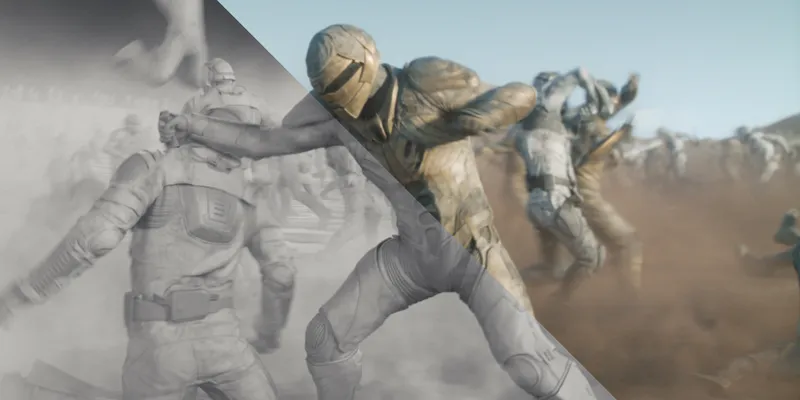Indian filmmakers are competing with the best in the world: Namit Malhotra of DNEG, the firm behind Oppenheimer's VFX
DNEG has created the VFX for Oscar-winning films Dune, Inception, and Interstellar. Closer home, it is known for its work in Brahmastra, and more recently, Fighter.
Films Interstellar, Inception, Dune, Oppenheimer, Bhramastra: Part One–Shiva, and Fighter have one thing in common—stellar visual effects or VFX. While the first three have already won Oscars for special effects, Oppenheimer is anticipated to win one this year.
UK-based Double Negative, popularly known as DNEG, is the studio behind not just these. It has also worked in some of Hollywood’s most popular action movies—including Avengers: Endgame, Avengers: Infinity War, Mowgli, Bohemian Rhapsody, The Fast and Furious series, The Last of Us, The Lord of the Rings: The Rings of Power, Mission Impossible–Fallout, Deadpool 2, Jurassic World: Dominion, Men in Black: International, Dunkirk, and the list goes on.
Closer home, DNEG will also take care of the VFX in Director Nitesh Tiwari’s much-anticipated film, Ramayana.
DNEG CEO Namit Malhotra’s association with cinema has a long history. The grandson of MN Malhotra—the renowned cinematographer known for his works in Bollywood films Naya Daur (1957), Kanoon (1960), and Hamraaz (1967)—and son of producer Naresh Malhotra of Shahenshah (1988) fame, Namit’s entry into the film industry was obvious.
However, for a commerce student with a passion and aspiration to be a film director, Malhotra followed the unconventional path of starting up from his garage, ‘with an Apple computer and three boys.’
This small endeavour eventually translated into Video Workshop, a humble editing studio that swiftly became a powerhouse for television shows (Boogie Woogie), commercials, and music videos.
In 1997, Malhotra merged Video Workshop with his father’s film production equipment rental business, Video Works, to create Prime Focus.
Prime Focus pioneered in introducing technologies like visual effects, sound, and digital intermediate for TV and movies.
In 2014, Malhotra orchestrated the merger of Prime Focus World with DNEG. He is also a film producer, with credits including The Hurricane Heist, Horizon Line, The Garfield Movie, Brahmāstra: Part One – Shiva, and Fighter.

A scene from Dune, before (L) and after (R) VFX | Source: DNEG
In a recent conversation with YS Life, Malhotra provides insights about industry trends, Oscars expectations, and what’s in store for DNEG.
Edited excerpts from the conversation:
YS Life [YSL]: Before Bhrahmastra: Part One, you were mostly involved in Hollywood projects. How did the foray into Bollywood happen?
Namit Malhotra [NM]: Bhrahmastra: Part One came as that Indian story that aspired to use the best technology and the creative storytelling we could find in the West. They wanted to make it much more presentable so that our audiences feel the same amount of pride and excitement they feel watching a Hollywood film.
We were brought on to help in the execution and the design of the visual effects. We were in this new paradigm, where we were leveraging our technology with our Indian culture and aesthetic, with Western capabilities. The validation and success only bolstered our confidence further.
YSL: Tell us about an interesting yet challenging project you have worked on recently.
NM: The core ethos on which DNEG operates is, ‘If you can dream it, we can do it’. For instance, when Interstellar was made, Christopher Nolan—who likes to present things as authentically and close to real as possible—came to us with the challenge that we had to create a black hole or a wormhole in the real world.
It was challenging because nobody had actually seen one. Our technology teams went to work with an astrophysicist (Krip Thorne), decoded all the scientific formulas, and presented what happens to light when it bends itself through a black hole or a wormhole.
That presentation not only got an Oscar but also got published in scientific journals and white papers as a clear validation of how art was used for leading science. It's one very specific example where technology is used or created to bring a certain vision to life.

VFX for Oppenheimer by DNEG | Image: DNEG
YSL: Do you have a personal favourite project?
NM: Oh, obviously, Dune! Denis Villeneuve (director) and his vision really helped push the scope and scale of visual storytelling to a whole new level, and that is, again, something I'm particularly super enthused by in terms of what Dune: Part Two holds in store.
YSL: From the Indian perspective, you recently worked with Siddharth Anand’s Fighter. How was your experience?
NM: Siddharth and I go back many years. Our fathers produced Shahenshah together. So, there's a deep history and relationship. We grew up with a lot of films and conversations about films throughout our careers. Even though he became a director and I stepped into the world of visual effects—Fighter brought us together.
I feel the movie, in 3D, is at par or better than anything else that's been there in the world. It was a massive leap forward in terms of the quality of aerial action.
It's a great time to be an Indian filmmaker now. They (Indian filmmakers) are really aspirational and are trying to level themselves against the best in the world. And, let's not forget that, whatever we do in India, we are still always a fraction of the budget of what Western filmmakers have in terms of money and time.
If you think about what we (Indian filmmakers) are creating for the time and money that we've got, it far outpaces anything else in the world on a relative basis.

A scene from Dune, before (L) and after (R) VFX | Image source: DNEG
YSL: How long does it usually take to complete one project—from ideation to the final product?
NM: That really depends on the project. For instance, Bhramastra: Part One took six to seven years, and obviously, the pandemic did not help. Ayan (Mukherjee) wanted to bring together the world of Brahmastra, which will have a minimum of three movies. But that was an extreme outcome.
On the other hand, Siddharth’s Fighter was ready in 12 months, and it was nothing short of a miracle.
YSL: What are some of the upcoming projects you are really excited about?
NM: While Hollywood took a short break with the actors’ and writers’ strike, there’s a lot of stuff that’s coming back into production soon, and we are looking forward to those projects.
Some of our upcoming projects are Furiosa and Godzilla x Kong: The New Empire. There are a lot of interesting projects that continue to push our capabilities.
Disclaimer: The story was updated to fix factual errors.
Edited by Suman Singh







